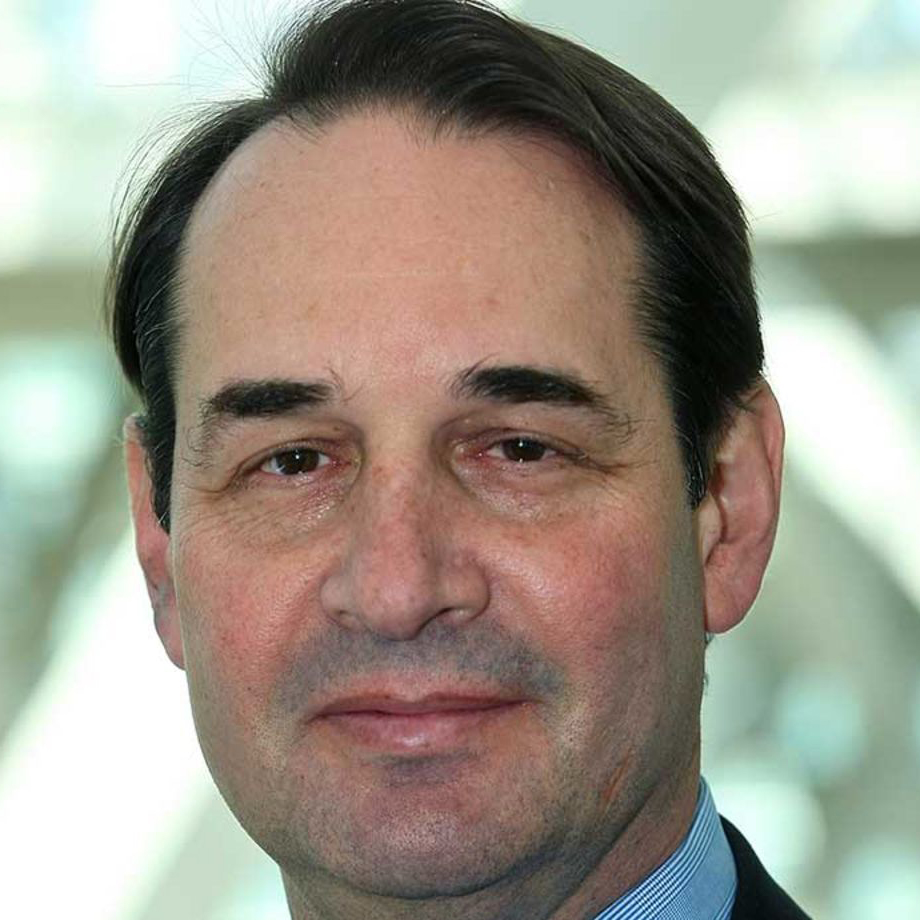Taking the Measure Of Audience Measurement

No one understands the complications of measuring video viewership more than the Media Rating Council. The nonprofit organization is charged with setting standards and auditing numbers that purport to show how many people are watching programs and advertising.
Reliability is key: Some TV executives say that making sure all of their viewership gets counted properly is the industry’s most important issue. George Ivie, executive director of the MRC, which was set up by Congress to ensure trustworthy measurement, said his outfit is busier than ever.
“We are in the middle of trying to sort this out. We’re not only in the middle; we’re immersed in it,” Ivie said.
The MRC did about 15 audits per year when Ivie started with the MRC back in 2000. This year, it’s got 125 going.
“It’s because of the complexity of the media environment and the need of these companies to really understand measurement and what they’re buying,” Ivie said. “That’s driving many companies to come to MRC to have products accredited.”
What was once known as traditional television can now be watched on multiple platforms and devices resulting in Franken-metrics, as different technologies are being stitched together. Each of those measurements and the way they’re combined calls for the MRC’s stamp of approval because billions of dollars ride on the viewer numbers being accurate.
More digital companies are jumping into video, and advertisers are rebelling against the way those firms are giving themselves high marks while doing their own homework in scoring how many people they reach. As a result, the MRC is either actively auditing or at least talking to nine digital companies including Twitter which agreed to be audited and try to qualify to have its number accredited.
The smarter way to stay on top of broadcasting and cable industry. Sign up below
An even bigger potential complication comes from all the data that networks are using to create the kind of targeted advertising promised by digital competitors. Another subject the MRC is wrestling with: Assessing the quality of the data networks and advertisers are using and seeing that it’s being properly combined with viewing data.
“If you talk to my peers, I think you’d hear the MRC is hugely important and every day they’re getting more and more important,” said Howard Shimmel, chief research officer at Turner.
Shimmel noted that YouTube recently announced that there were 100 million hours of YouTube consumed on TVs every day. “I don’t know what to make of that number because it’s obviously not something I know is directly comparable to Nielsen,” he said. By setting standards, the MRC plays a role in helping programmers and advertisers compare apples to apples.
“We do need someone who doesn’t have a parochial interest in helping us get to a place where buyers and sellers can agree,” Shimmel said.
A Simple Organization
Ivie describes the MRC as just such a simple organization, and focused on two things. One is setting standards; the other is accreditation.
“Both of those are going gangbusters,” Ivie said. “It’s more important than ever to set standards in many of these areas.”
Digital needs standards, but with the changes in linear TV, the standards that have applied for years now need to change. “It’s turned into a full-blown huge cycle for us that we’re trying to keep up with,” he said.
At the same time, the MRC is being asked to evaluate new products.
“We try to apply a seal to a product and ensure that it has good internal controls, it’s transparent, and that it’s fit for its purpose,” Ivie said. “And that can get really hard when somebody brings you something you’ve never seen before [that] you don’t even know necessarily how to test exactly.”
The one big trend Ivie said he’s seeing is that advertisers are paying more attention to measurement issues.
“It used to be I couldn’t even get an advertiser to listen to me. Now almost all of them are becoming cognizant and recognizing that they have some responsibility. I think that’s a really good development for the industry. They fund the whole system and they need to pay attention,” Ivie said.
“I think the MRC has to continue to evolve to create frameworks and methodologies that can adjust to this changing landscape,” said Jed Meyer, executive VP for research at Univision. “What everybody wants is apples to apples across measurement. I think the change I’ve seen is the concern from the buying community, whether that be the agencies or the advertisers, about what am I getting here,” Meyer added.
Sometimes the MRC does things it thinks are a big deal, but in Ivie’s opinion, the industry yawns. For example, after a long audit, a Nielsen product called DTVR won accreditation. The product allows a show’s conventional ratings to be combined with viewing on apps based on measurement software within the app called SDKs.
“That’s really kind of the wave of the future,” Ivie said. “And it will serve as a model going forward. It’s emblematic of where Nielsen’s going with their total audience ratings and where comScore is going with multiplatform.
“A certain part of accreditation is to figure out how do we audit this, how do we ensure this is good and it meets standards? But now we have a whole model to do that,” he said.
Kelly Abcarian, senior VP of product leadership at Nielsen, said DTVR is indeed a big deal, providing viewing information from people who are cord-cutting, cord-shaving and using the new virtual MVPDs. MRC accreditation “ensures that at the end of the day, not only are we providing full comprehensive measurement, we’re giving clients the same confidence level to transact on ratings data just as we’ve done for decades,” Abcarian said.
Nielsen has staff members dedicated to working on MRC audits, which are very labor-intensive, rigorous and thorough, Abcarian said. While some digital media companies are producing their own data and analytics, Nielsen is held to higher standards and goes to great lengths to meet them.
“We think it’s critically important that our clients understand the independence, transparency and accountability of our data, which is why we do spend a lot of effort working and partnering with the MRC on accreditation as we continue to evolve our measurement,” Abcarian said.
There’s an App for That
Meanwhile, the MRC is working with the industry to create an open-source SDK that would ensure viewer information is collected the same way on every video app. Now, each app uses its own system, which means very different data can result.
Right now, the MRC is in the midst of establishing two key standards. One, for digital video audiences, is in the late stages with a draft about to be issued. The second is for cross-media measurement focused on video.
In both cases, an established standard will make it easier for programmers, distributors and advertisers to compare video audiences on different platforms.
People in the industry can have input into this process by signing up for the committee that is designing the standard. You don’t have to be a member of the MRC to join the committee or pay dues to have a voice in shaping a key industry debate, Ivie said.
As digital companies get into the video business, they’re turning to the MRC. Ivie said Google’s YouTube, Facebook and its Instagram and Twitter have already agreed to be audited. Discussions are underway with Snapchat, Amazon, Pinterest, Foursquare and LinkedIn. When asked, Ivie said the MRC has not talked to Hulu or Netflix.
The increasingly digital world also means advertising has to be measured separately from the programming that pays for it because of the rise in dynamic ad insertion and addressable technology.
Ivie said you can’t assume any more that if people see a program, they also see the ads. “It’s still a pretty good assumption in linear TV and radio, but in other media types that’s less and less of a valid assumption and you need to measure ads discretely and you need to measure content discretely.”
It will still be important for the programmers and the program owners to see measured viewing numbers. And media buyers and advertisers will want programming rating information to help them decide where to run ads, Ivie said. “But segregating them is something that’s front and center in the cross-media standards. In fact, it’s going to be kind of a requirement.”
Data Dilemma
Things become even more complicated as networks sell advertising based not on the traditional demographic ratings for programs, but by using data to figure created targeted audiences designed for each specific advertiser.
“So what’s happening is that the data providers that are coming forward and using these processes for targeting and audience attribution, their data is becoming more and more prominent and important and some of them have started to talk to us,” Ivie said. “It makes sense because if you’re a big data provider like Experion or Acxiom, you want someone to certify that your data is accurate and that it can be used to identify viewers within a target audience.”
That in itself is a complicated process. “For a couple of years now we’ve been thinking about what the audit requirements should be for that,” said Ivie. “We have one vendor who I can’t name ask us for accreditation. So they’re in the audit process. And we’re building standards around how to audit that,” he continued, adding that evaluating data providers to the TV business could become one of the most prominent things the MRC does over the next five years.
“And the industry needs it because right now people are using that data. They don’t know about the quality of that. It’s a black box,” he said.
As a result, MRC finds itself in the middle of several initiatives. Turner, Viacom and Fox have banded together to standardize the way advertisers use data to define target audiences. Open AP has not discussed being audited by the MRC, but Turner’s Shimmel would like to see the MRC review the data Open AP uses.
“We want the data that is driving audience deals to be accredited. We want advertisers to feel as comfortable using audience data as they feel using agesex currency data now,” Shimmel said.
But Open AP and other data-driven ad product will move forward even without the MRC seal of approval.
“Because the MRC process is so detailed, there may be some times — and look, we’re doing it now with audience data — where we have to move the business forward and maybe we’ll be a year or two ahead of the MRC, but I don’t think we can afford to wait and only bring to market stuff that has been accredited,” Shimmel said.
No matter how well the MRC does its job setting standards and accrediting research regimes, the players will continue to complain about the umpires and scorekeepers.
“I don’t think the industry’s ever been happy with measurement,” Ivie said. “I don’t see it happening. There are many audited choices for people who are trying to keep up with it. I feel like we do our job every day and for a small team we do a hell of a lot.
“Is there going to be a day when everybody said we’ve solved this measurement issue?” he wondered aloud. “No, that’s never going to happen.”
Jon has been business editor of Broadcasting+Cable since 2010. He focuses on revenue-generating activities, including advertising and distribution, as well as executive intrigue and merger and acquisition activity. Just about any story is fair game, if a dollar sign can make its way into the article. Before B+C, Jon covered the industry for TVWeek, Cable World, Electronic Media, Advertising Age and The New York Post. A native New Yorker, Jon is hiding in plain sight in the suburbs of Chicago.

